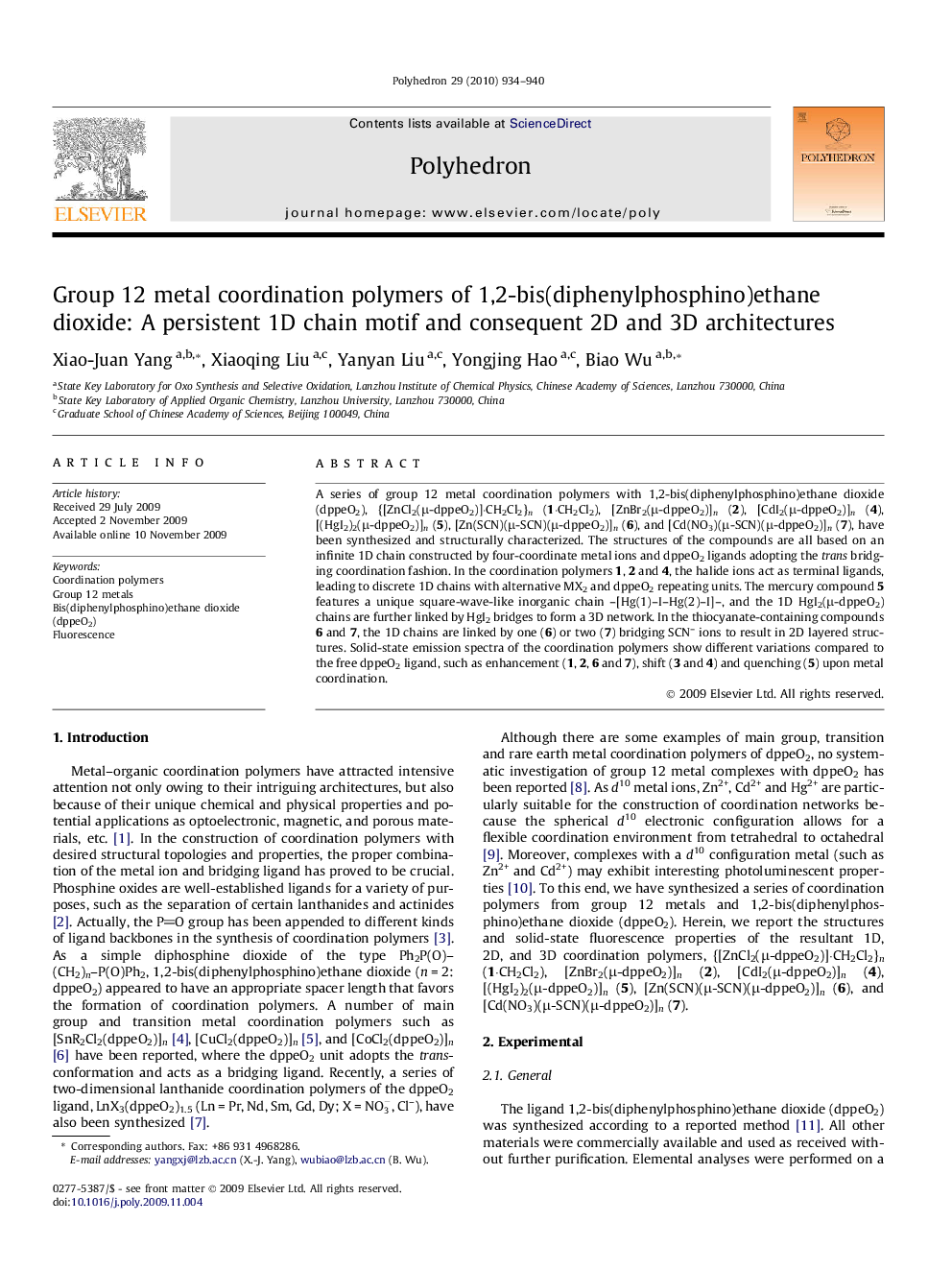| Article ID | Journal | Published Year | Pages | File Type |
|---|---|---|---|---|
| 1334932 | Polyhedron | 2010 | 7 Pages |
A series of group 12 metal coordination polymers with 1,2-bis(diphenylphosphino)ethane dioxide (dppeO2), {[ZnCl2(μ-dppeO2)]·CH2Cl2}n (1·CH2Cl2), [ZnBr2(μ-dppeO2)]n (2), [CdI2(μ-dppeO2)]n (4), [(HgI2)2(μ-dppeO2)]n (5), [Zn(SCN)(μ-SCN)(μ-dppeO2)]n (6), and [Cd(NO3)(μ-SCN)(μ-dppeO2)]n (7), have been synthesized and structurally characterized. The structures of the compounds are all based on an infinite 1D chain constructed by four-coordinate metal ions and dppeO2 ligands adopting the trans bridging coordination fashion. In the coordination polymers 1, 2 and 4, the halide ions act as terminal ligands, leading to discrete 1D chains with alternative MX2 and dppeO2 repeating units. The mercury compound 5 features a unique square-wave-like inorganic chain –[Hg(1)–I–Hg(2)–I]–, and the 1D HgI2(μ-dppeO2) chains are further linked by HgI2 bridges to form a 3D network. In the thiocyanate-containing compounds 6 and 7, the 1D chains are linked by one (6) or two (7) bridging SCN– ions to result in 2D layered structures. Solid-state emission spectra of the coordination polymers show different variations compared to the free dppeO2 ligand, such as enhancement (1, 2, 6 and 7), shift (3 and 4) and quenching (5) upon metal coordination.
Graphical abstractGroup 12 metal coordination polymers with 1,2-bis(diphenylphosphino)ethane dioxide (dppeO2) have been synthesized, which are based on a 1D chain motif constructed by metal ions and bridging dppeO2 ligands. While the terminal halides lead to discrete 1D chains, the SCN and HgI2 units link such chains to 2D and 3D networks.Figure optionsDownload full-size imageDownload as PowerPoint slide
